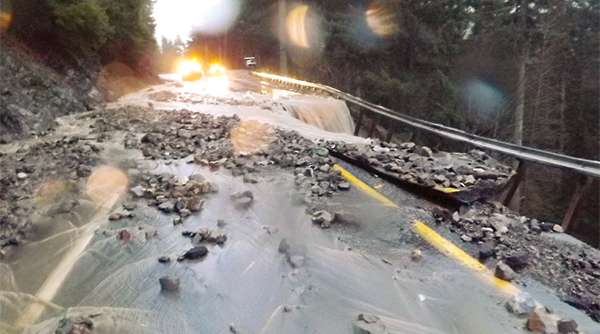Trucking Does Best to Brace for Extreme Weather

Weather-related delays are an issue fleets often face, and the threat of a busy hurricane season later this summer could bring with it challenges in getting trucks to their destinations. Experience helps with preparation, but dealing with storms is never easy, carrier executives said.
“In trucking you never make up the loss; a loss in downtime cannot be recouped,” said Mike Collins, president of North Kingstown, R.I.-based M&D Transportation Co. He also said his company and clients were greatly impacted by Hurricane Sandy in late October 2012, which affected portions of the Northeast, including New York, New Jersey and Connecticut. While M&D’s home state of Rhode Island wasn’t as severely hit, the proximity to the devastation had ripple effects.
“We shut down trucks if there were highway closures,” he said. “A lot of our customers were hit hard; they had flooding in their parking lots, [in some cases they were] totally flooded. So therefore, we had to wait for them to reopen.” Recently, Houston had such extreme flooding that vehicles got stuck as water reached the windows. Rainfall for the evening of Aug. 8 was predicted to be as much as 2-1/2 inches per hour, meaning more flash flooding and dangerous driving conditions for truckers.
Collins noted that while Sandy delivered a “strong blow” to M&D, losing two or three days of “strong revenue right after the storm.” In the aftermath the company — which has about 30 trucks, specializing in dry van and some limited refrigerated — got business as a result of its impact. “Sandy made us extremely busy,” he said. “One of our customers makes wiring and cable, and we were busy taking a lot of cable to New York and New Jersey.”
According to the National Oceanic Atmospheric Administration, this year will be an unusually strong Atlantic hurricane season though probably normal in the Pacific. In an e-mail to Transport Topics, Adam Smith, a climatologist with NOAA’s National Centers for Environmental Information Center for Weather & Climate in Asheville, N.C., said, “2017 has had a near-record start to the year with nine such disasters, only behind the years 2011 and 2016, which had 10 individual billion-dollar disasters each during the Jan 1- June 30 period.” In the Atlantic, forecasters were predicting a 45% chance of an above-normal season, but as of Aug. 9, that percentage swelled to 60%. NOAA said it could be the biggest hurricane season since 2010.
Sam Farruggio, owner of Farruggio’s Express in Bristol, Pa., said his company “learned the hard way” to prepare in advance of hurricanes. In the past, they lost cellular and internet connectivity, as well as use of their computers.
“We have Linux so there’s not as much risk of failure; we’ve tried to do our due diligence,” he said. “But we did experience a complete outage during Sandy where we needed to print our operation daily,” since they’d lost connectivity. Nowadays, he said, they “print out reports on what we have scheduled” to ensure they aren’t caught flatfooted in the event of another technology outage.
Sometimes, however, deliveries simply cannot be made due to the weather.
“A truck doesn’t have any more traction on ice than a car,” said Brian Kinsey, president of Atlanta-based Brown Integrated Logistics Inc. “We have a saying — on ice, no dice. We’ll call the customer and say, ‘Look, we will be off roads by this time; we will either not pick up or deliver.’ ”
Kinsey, whose company operates south of the Ohio River and east of the Mississippi River, keeps track of weather via the Weather Channel and its own internal safety department. “We know [what’s coming] well in advance” of snow, other storms or “occasional tornadic activity,” he said. At such times they send out notices to affected terminals or, in some cases, all terminals.
Planning ahead is also key to how FedEx Freight handles extreme weather. In an e-mailed statement to Transport Topics, FedEx Freight spokesperson Lauren Doll said: “In extreme weather events, our top priority is the safety and well-being of our team members, as well as providing the highest level of service to our customers. In those situations, we execute contingency plans that leverage our flexible network and allow us to quickly identify and respond to issues in order to maintain that high-level service for our customers.”



